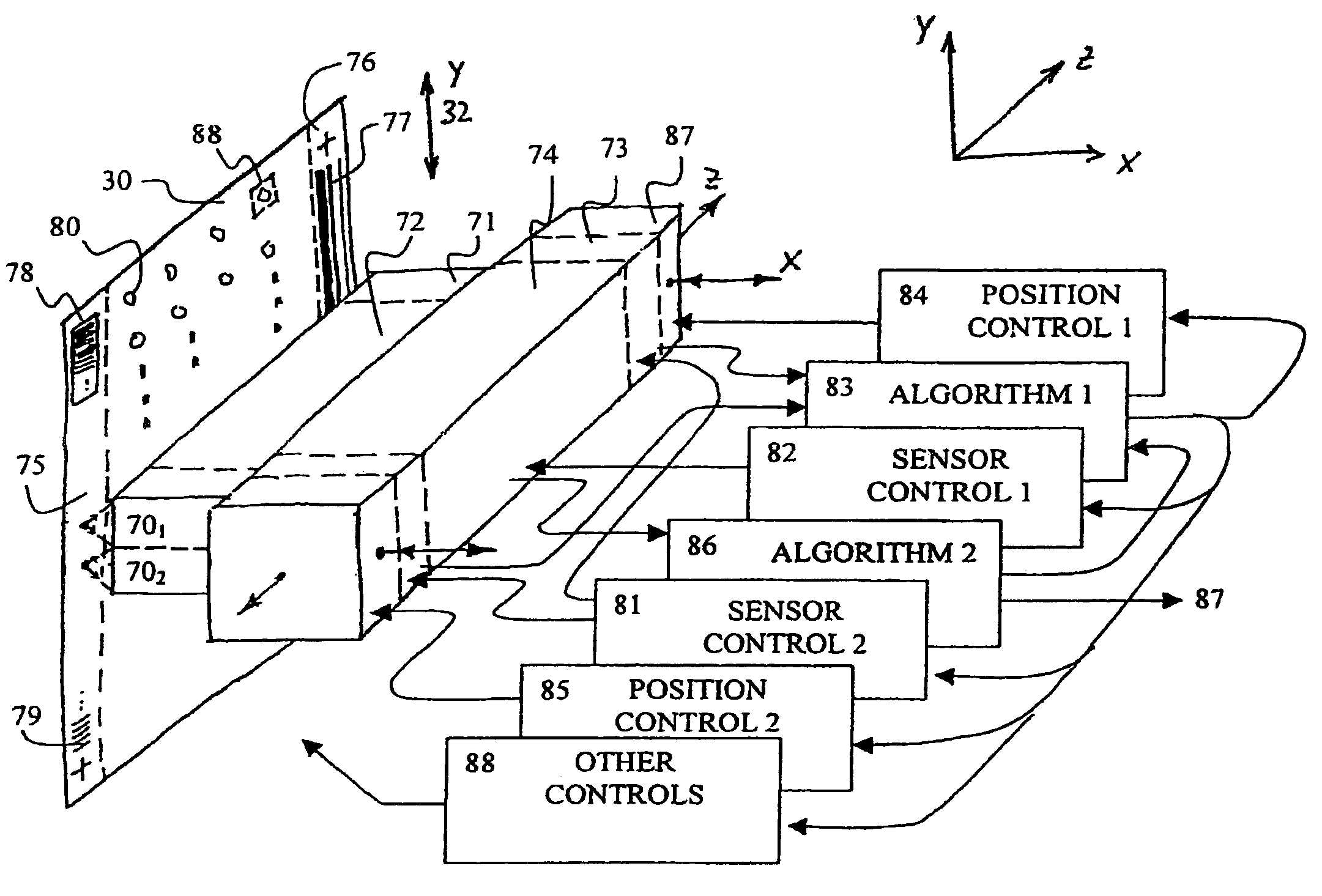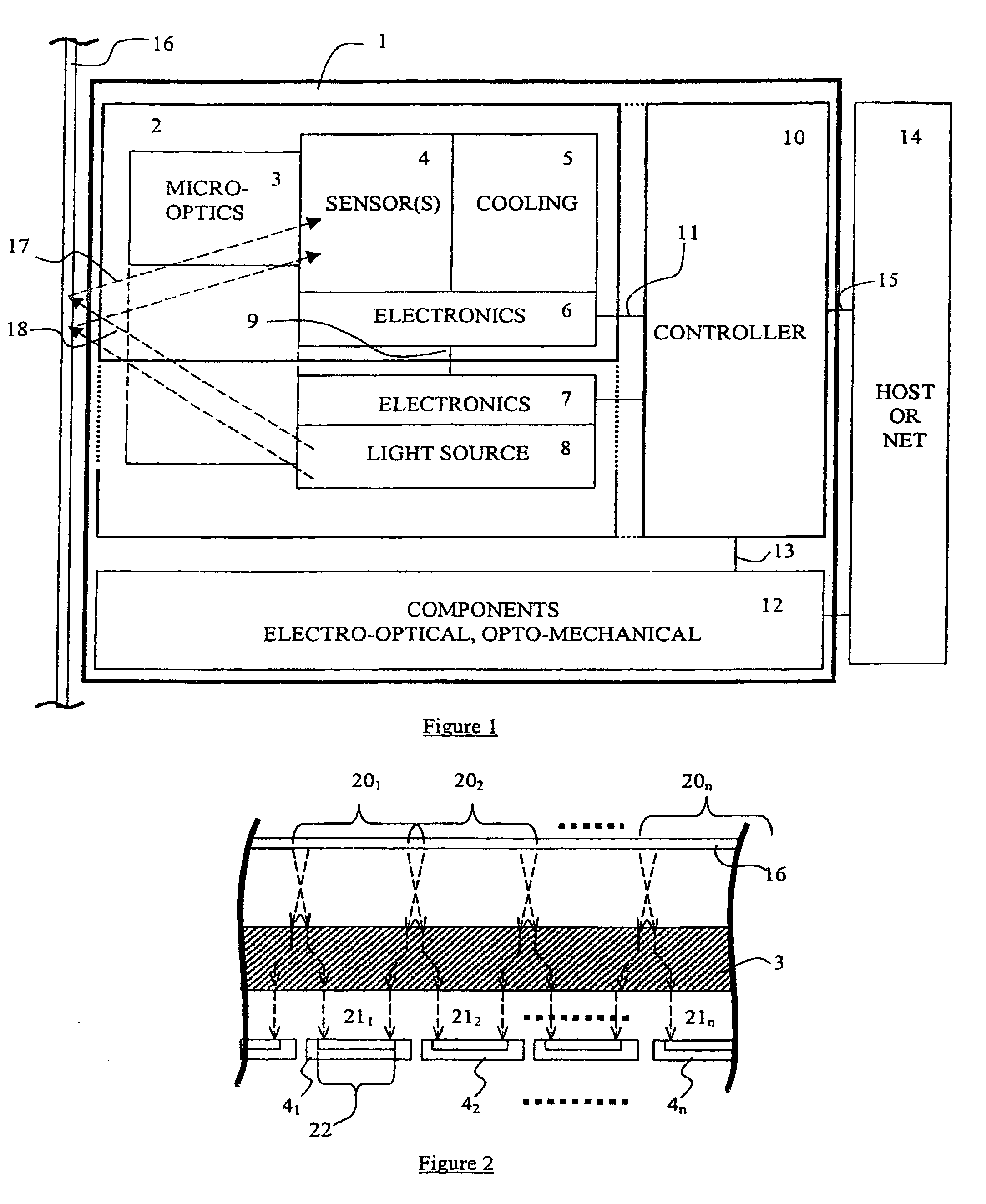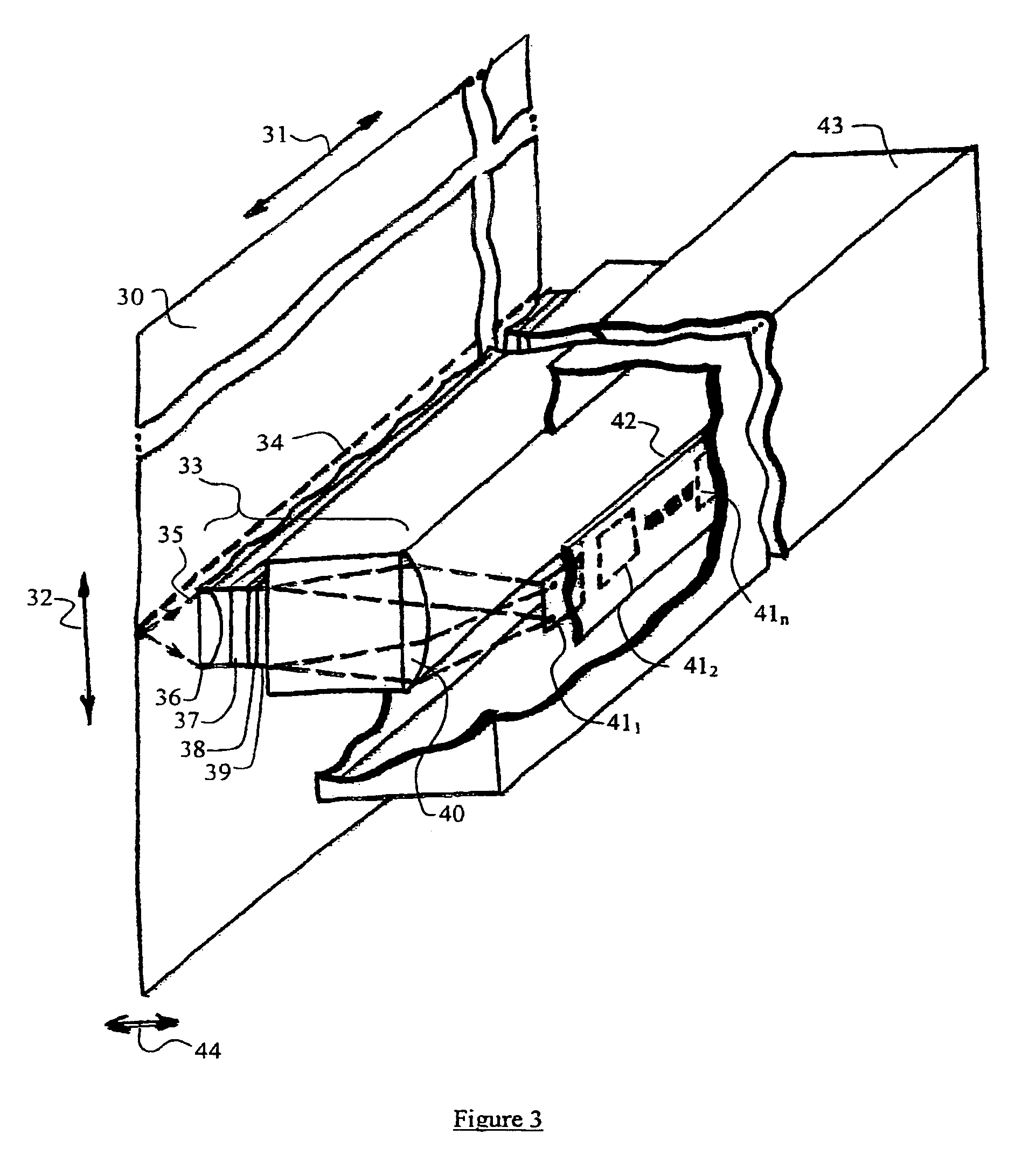Apparatus and method for photo-electric measurement
a technology of photoelectric measurement and apparatus, applied in the field of apparatus and method for photoelectric measurement, can solve the problems of reducing device yield, sensitivity, and sensitivity, and limiting the size of the area that can be measured, and achieve the effect of less susceptible to dust and dirt, and mechanical stability
- Summary
- Abstract
- Description
- Claims
- Application Information
AI Technical Summary
Benefits of technology
Problems solved by technology
Method used
Image
Examples
third embodiment
[0075]Referring to the third embodiment in FIG. 10, a frame transfer type CCD may be used to acquire the two-sided spectral information. The active region 112 is exposed, then shifted quickly under the shaded region 113 (electronic shuttering action). As the shaded region is read via the serial register, the next exposure occurs in the active region.
[0076]Referring to the fourth embodiment in FIG. 11, a frame transfer type CCD with two shaded regions 116, 117 may be used to acquire the two-sided spectral information. The active region is divided into two separately controllable regions 114 and 115. In this case, two spectral orders can be measured simultaneously. Referring to the fifth embodiment in FIG. 12, two frame transfer type CCDs 118 and 119 may be used to acquire the two-sided spectral information.
sixth embodiment
[0077]Referring to the sixth embodiment in FIG. 13, the image sensor shown may be a full-frame or interline transfer type CCD, whereby one or two serial register(s) 120, 123 are positioned between the spectral orders to be measured. Light from the zeroth order is prevented from being collected by the sensor by a means such as an aluminium mask on the sensor, or by blocking the light off-chip; i.e. by blocking the light by means of a mechanical mask or aperture which is not integrated onto the photo-electric conversion device(s). The spectral halves 121, 122 may be recombined (binned) directly on-chip in the serial register during the readout process.
[0078]Referring to the sixth embodiment in FIG. 14, a frame transfer device may be used as described in relation to FIG. 13.
[0079]FIGS. 15 and 16 shows an embodiment of a means and a method of performing gated detection using image sensor(s). Such time gated fluorescence or luminescence measurements combined with spectral discrimination ...
PUM
| Property | Measurement | Unit |
|---|---|---|
| electric | aaaaa | aaaaa |
| length | aaaaa | aaaaa |
| area | aaaaa | aaaaa |
Abstract
Description
Claims
Application Information
 Login to View More
Login to View More - R&D
- Intellectual Property
- Life Sciences
- Materials
- Tech Scout
- Unparalleled Data Quality
- Higher Quality Content
- 60% Fewer Hallucinations
Browse by: Latest US Patents, China's latest patents, Technical Efficacy Thesaurus, Application Domain, Technology Topic, Popular Technical Reports.
© 2025 PatSnap. All rights reserved.Legal|Privacy policy|Modern Slavery Act Transparency Statement|Sitemap|About US| Contact US: help@patsnap.com



